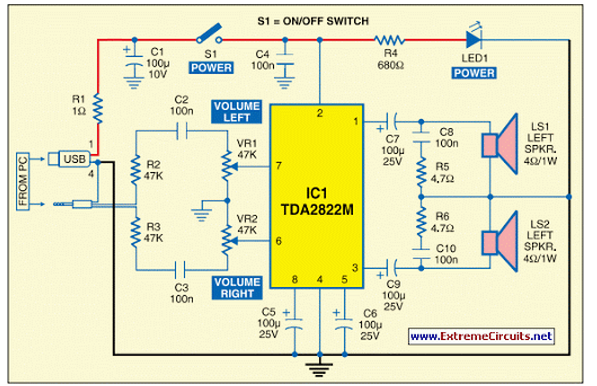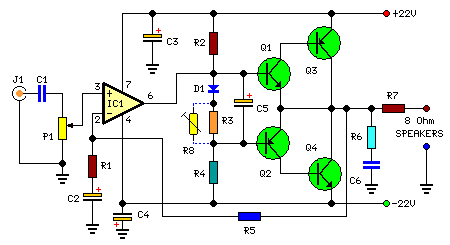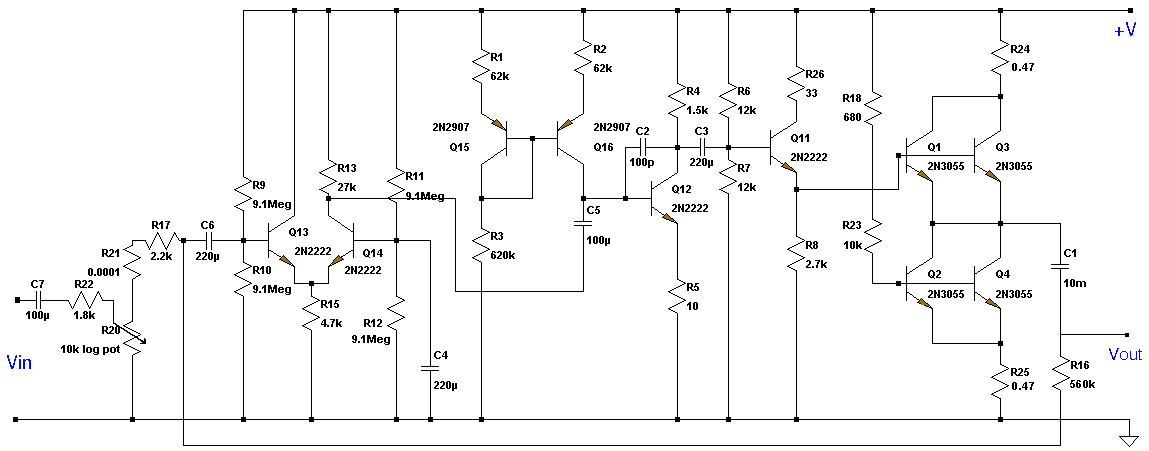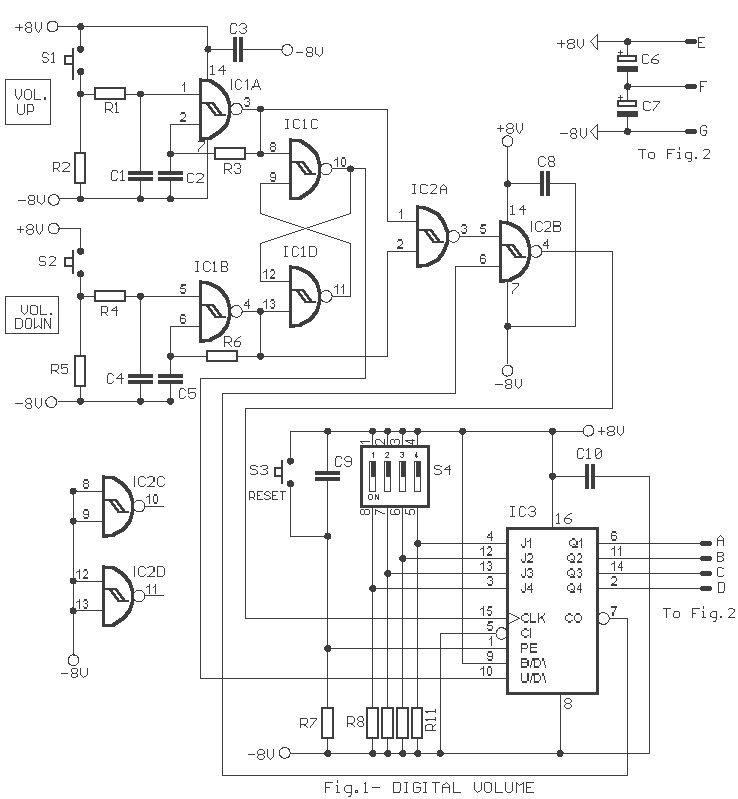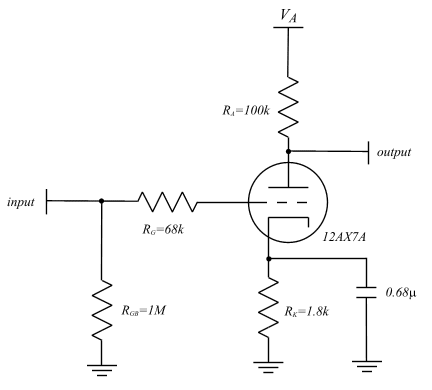
Low-Noise Audio Preamp
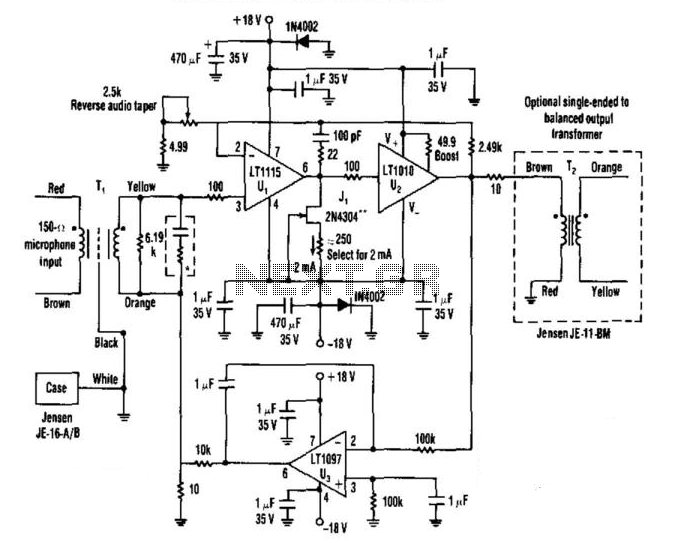
A low-noise LT1115 (Linear Technology, Inc.) operational amplifier is connected to a class-A buffer amplifier to create a variable gain (12-to-50 dB) microphone preamplifier. Total harmonic distortion (THD) is less than 0.01% across a frequency range from 80 Hz to over 20 kHz. The transformers must be adequately grounded and shielded.
The design of the microphone preamplifier employs the LT1115, known for its low noise characteristics, making it suitable for high-fidelity audio applications. The operational amplifier is configured in a non-inverting mode, allowing for a variable gain controlled by external resistive components. Gain adjustment can be achieved by using a potentiometer or a fixed resistor network, providing flexibility in amplification levels from 12 dB to 50 dB.
The class-A buffer amplifier serves to isolate the output of the LT1115 from the load, ensuring that the signal integrity is maintained while driving downstream audio processing equipment. This configuration minimizes distortion and enhances linearity, contributing to the overall performance of the preamp.
Total harmonic distortion (THD) is a critical metric for audio applications, and in this design, it is kept below 0.01%. This low level of distortion ensures that the audio signal remains clean and faithful to the original source, making it suitable for professional audio recording and live sound reinforcement.
Proper grounding and shielding of the transformers are essential to prevent electromagnetic interference (EMI) and radio frequency interference (RFI), which can introduce unwanted noise into the audio signal. Shielding techniques may include using twisted pair wiring, enclosing the transformers in a grounded metal case, and ensuring that all grounding points in the circuit are connected to a common ground to minimize ground loops.
Overall, this microphone preamplifier design combines high-performance components and careful layout considerations to achieve superior audio fidelity, making it an excellent choice for various audio applications. A low-noise LT1115 (Linear Technology, Inc.) op amp is coupled to a class-A buffer amplifier to produce a variable g ain (12-to-50 dB) microphone preamp. THD is less than 0.01% from 80 Hz to over 20 kHz. The transformers must be properly grounded and shielded. 🔗 External reference
The design of the microphone preamplifier employs the LT1115, known for its low noise characteristics, making it suitable for high-fidelity audio applications. The operational amplifier is configured in a non-inverting mode, allowing for a variable gain controlled by external resistive components. Gain adjustment can be achieved by using a potentiometer or a fixed resistor network, providing flexibility in amplification levels from 12 dB to 50 dB.
The class-A buffer amplifier serves to isolate the output of the LT1115 from the load, ensuring that the signal integrity is maintained while driving downstream audio processing equipment. This configuration minimizes distortion and enhances linearity, contributing to the overall performance of the preamp.
Total harmonic distortion (THD) is a critical metric for audio applications, and in this design, it is kept below 0.01%. This low level of distortion ensures that the audio signal remains clean and faithful to the original source, making it suitable for professional audio recording and live sound reinforcement.
Proper grounding and shielding of the transformers are essential to prevent electromagnetic interference (EMI) and radio frequency interference (RFI), which can introduce unwanted noise into the audio signal. Shielding techniques may include using twisted pair wiring, enclosing the transformers in a grounded metal case, and ensuring that all grounding points in the circuit are connected to a common ground to minimize ground loops.
Overall, this microphone preamplifier design combines high-performance components and careful layout considerations to achieve superior audio fidelity, making it an excellent choice for various audio applications. A low-noise LT1115 (Linear Technology, Inc.) op amp is coupled to a class-A buffer amplifier to produce a variable g ain (12-to-50 dB) microphone preamp. THD is less than 0.01% from 80 Hz to over 20 kHz. The transformers must be properly grounded and shielded. 🔗 External reference
